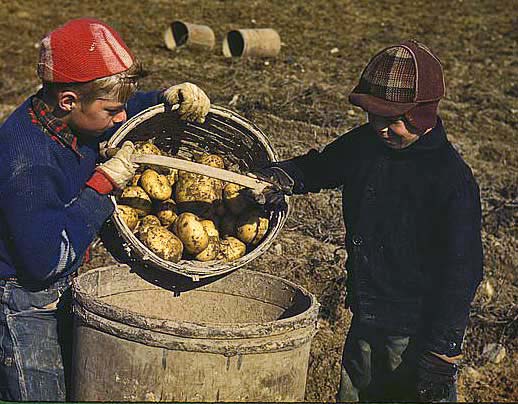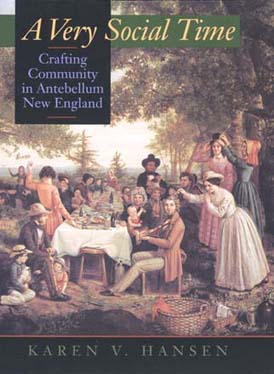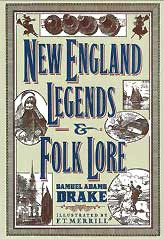Michael R. H. Swanson, Ph. D.
Office: GHH 215
Hours: M, W, F 1:00-2:00
T, 9:00 - 10:00 or by appointment
Phone: 254 3230
This week we begin the third section of this course, which will synthesize some ideas from the next two books on our reading list: Karen V. Hansen’s A Very Social Time: Creating Community in Antebellum New England, and Samuel Drake''s New Englands & Folklore.
I think these books will pair together qauite well, though they represent very different methodologies and purposes. And I hope the inclusion of them illuminates the structure of the course more clearly. We;ve spent about a month studying the the physical shape and nature of the New England Village as it evolved in the 18th and 19th centuries. We're now going to look at how the physical reality of the village creates and shapes the village's society and culture
. We’ll look at this through Karen Hansen’s book. How did men and women in New England Villages relate to each other? What were the typical institutions through which they interacted? Here, we’ll look at everything from the role of the Church to the role of the Picnic.
Simultaneously we'll start to delve into Samuel Drake’s, New England Legends and Folklore.. This book is very different from the rest in that it is a collection of works of the imagination–folk tales, legends, poems, and the like, recorded when New England was much closer in character to its origins than perhaps it is now. These 19th century tellings of tales reaching back into the 18th century and beyond, would have been quite familiar to the men and women Karen Hansen presents to us.Folk literature unlike High literature, is also a product of geography and local culture.. You’ll notice that Drake organizes his book geographically.
 Read, in Hansen, A Very Social Time
Read, in Hansen, A Very Social Time

 Acknowledgments, Author's Note, pp. xi-xv
Acknowledgments, Author's Note, pp. xi-xv

 Chapter I. Making the Social Central, an Introduction pp. 1-28
Chapter I. Making the Social Central, an Introduction pp. 1-28
- Take some time to look at the illustrations, gathered together following p. 112.

 APPENDIX A: Sources of Evidence pp. 171 - 182
APPENDIX A: Sources of Evidence pp. 171 - 182
- The Acknowledgments and Author's Note will explain the author's interests and methodology, including the editorial process (This is the second time I've asked you to do this. Remember we considered this in the case of William Wood's book as edited by Alden Vaughn).
- Chapter One suggests that while we normally divide human activity in to private and public spheres, there are actually three spheres, rather than just two. We need to consider the social sphere apart from the public and private. Make sure that you understand how Ms. Hansen defines these. The key section begins on p. 7.
- When you look at the illustrations, try to develop both empathy with and curiosity about the subjects posing for them.
- The Appendix is especially usful for its discussion of the practical usefulness of diaries, letters, and the like. Hansen does a special service for discussing the difference between the kinds of diaries and letters the intelligentsia write and the kinds of diaries and letters (and autobiorgraphies) ordinary people write. I think you'll see how she came to love the persons about which she wrote.
We have some rich sources of ordinary people in the 1930s and 1940s courtesy of the Library of Congress...like the children picking potatoes I've posed in the corner. Browser thorugh the New England ones, and add a few to your notebooks.
Here's another example. The caption reads "Mrs. Frank Robbins and her children, who live in trailer near United Aircraft where her husband works nights. East Hartford, Connecticut ."
The picture links to the Library of Congress Collection. The index to New England pictures is available on Blackboard under Documents


